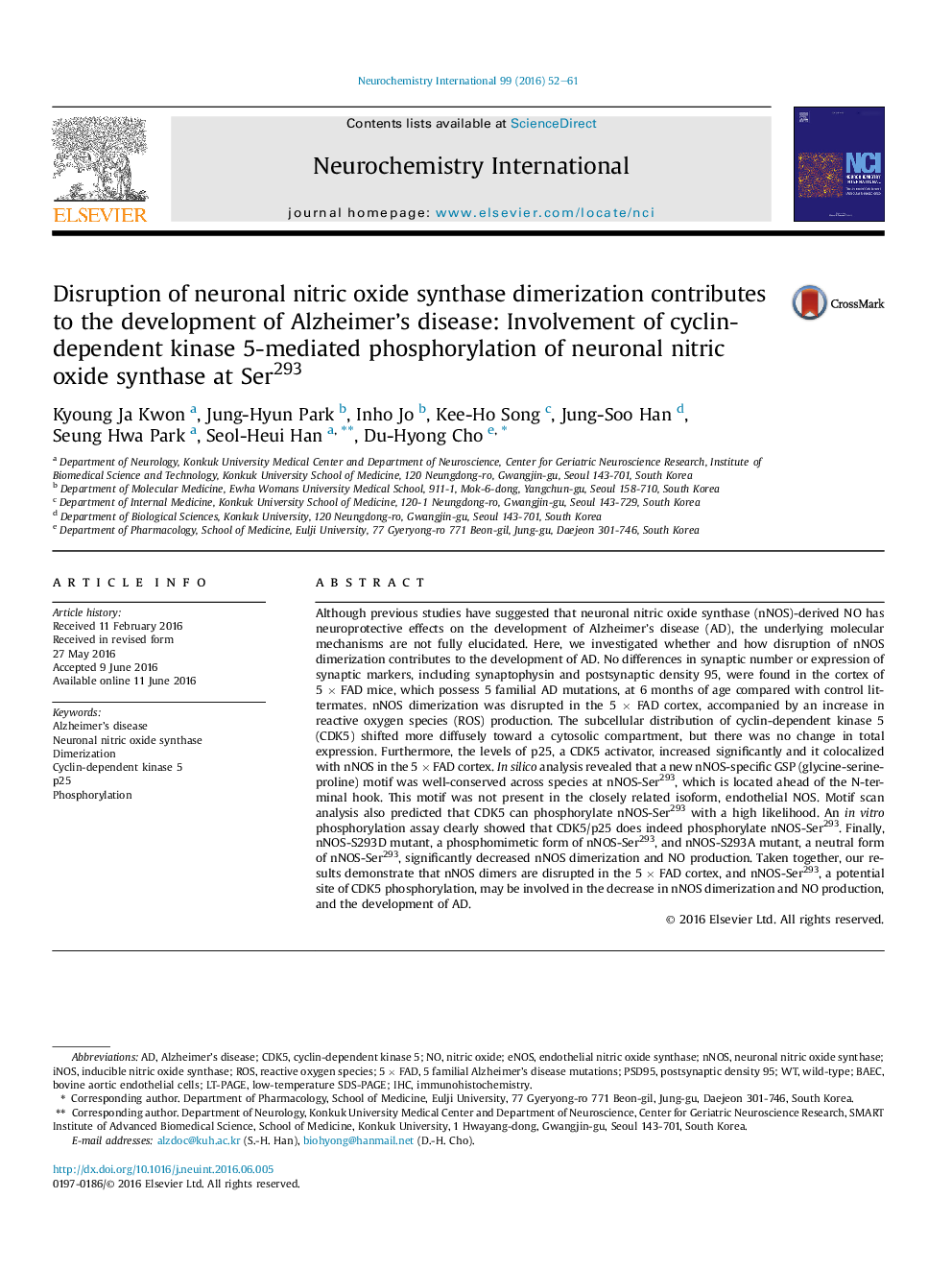| Article ID | Journal | Published Year | Pages | File Type |
|---|---|---|---|---|
| 2200296 | Neurochemistry International | 2016 | 10 Pages |
•nNOS dimerization is disrupted and ROS production is elevated in the frontal cortex of 5 × FAD mice at 6 months of age.•Expression of p25 protein is elevated.•nNOS protein is colocalized with the increased level of p25 protein.•CDK5 phosphorylates nNOS-Ser293in vitro, and mutations of nNOS-Ser293 disrupt nNOS dimerization and decrease NO production.
Although previous studies have suggested that neuronal nitric oxide synthase (nNOS)-derived NO has neuroprotective effects on the development of Alzheimer’s disease (AD), the underlying molecular mechanisms are not fully elucidated. Here, we investigated whether and how disruption of nNOS dimerization contributes to the development of AD. No differences in synaptic number or expression of synaptic markers, including synaptophysin and postsynaptic density 95, were found in the cortex of 5 × FAD mice, which possess 5 familial AD mutations, at 6 months of age compared with control littermates. nNOS dimerization was disrupted in the 5 × FAD cortex, accompanied by an increase in reactive oxygen species (ROS) production. The subcellular distribution of cyclin-dependent kinase 5 (CDK5) shifted more diffusely toward a cytosolic compartment, but there was no change in total expression. Furthermore, the levels of p25, a CDK5 activator, increased significantly and it colocalized with nNOS in the 5 × FAD cortex. In silico analysis revealed that a new nNOS-specific GSP (glycine-serine-proline) motif was well-conserved across species at nNOS-Ser293, which is located ahead of the N-terminal hook. This motif was not present in the closely related isoform, endothelial NOS. Motif scan analysis also predicted that CDK5 can phosphorylate nNOS-Ser293 with a high likelihood. An in vitro phosphorylation assay clearly showed that CDK5/p25 does indeed phosphorylate nNOS-Ser293. Finally, nNOS-S293D mutant, a phosphomimetic form of nNOS-Ser293, and nNOS-S293A mutant, a neutral form of nNOS-Ser293, significantly decreased nNOS dimerization and NO production. Taken together, our results demonstrate that nNOS dimers are disrupted in the 5 × FAD cortex, and nNOS-Ser293, a potential site of CDK5 phosphorylation, may be involved in the decrease in nNOS dimerization and NO production, and the development of AD.
Graphical abstractFigure optionsDownload full-size imageDownload as PowerPoint slide
